The Universal Penman. Engrav’d by George Bickham
£20.90£24.70 (-15%)
The 18th century was a wealth of knowledge, exploration and rapidly growing technology and expanding record-keeping made possible by advances in the printing press. In its determination to preserve the century of revolution, Gale initiated a revolution of its own: digitization of epic proportions to preserve these invaluable works in the largest archive of its kind. Now for the first time these high-quality digital copies of original 18th century manuscripts are available in print, making them highly accessible to libraries, undergraduate students, and independent scholars.
The eighteenth-century fascination with Greek and Roman antiquity followed the systematic excavation of the ruins at Pompeii and Herculaneum in southern Italy; and after 1750 a neoclassical style dominated all artistic fields. The titles here trace developments in mostly English-language works on painting, sculpture, architecture, music, theater, and other disciplines. Instructional works on musical instruments, catalogs of art objects, comic operas, and more are also included.
++++
The below data was compiled from various identification fields in the bibliographic record of this title. This data is provided as an additional tool in helping to insure edition identification:
++++
British Library
The eighteenth-century fascination with Greek and Roman antiquity followed the systematic excavation of the ruins at Pompeii and Herculaneum in southern Italy; and after 1750 a neoclassical style dominated all artistic fields. The titles here trace developments in mostly English-language works on painting, sculpture, architecture, music, theater, and other disciplines. Instructional works on musical instruments, catalogs of art objects, comic operas, and more are also included.
++++
The below data was compiled from various identification fields in the bibliographic record of this title. This data is provided as an additional tool in helping to insure edition identification:
++++
British Library
T086160
Engraved throughout and printed on recto only. Plates bear various dates 1733-41. Additional titlepage dated 1741: ‘The universal penman; or, the art of writing .. Exemplified in all the useful and ornamental branches of modern penmanship; .. Written wi
London : printed for the author, and sold by John Bickham, engraver, 1733-41. 52 parts ; 2°
Read more
Additional information
| Publisher | Gale ECCO, Print Editions (18 April 2018) |
|---|---|
| Language | English |
| Hardcover | 224 pages |
| ISBN-10 | 1379488818 |
| ISBN-13 | 978-1379488811 |
| Dimensions | 15.6 x 1.42 x 23.39 cm |

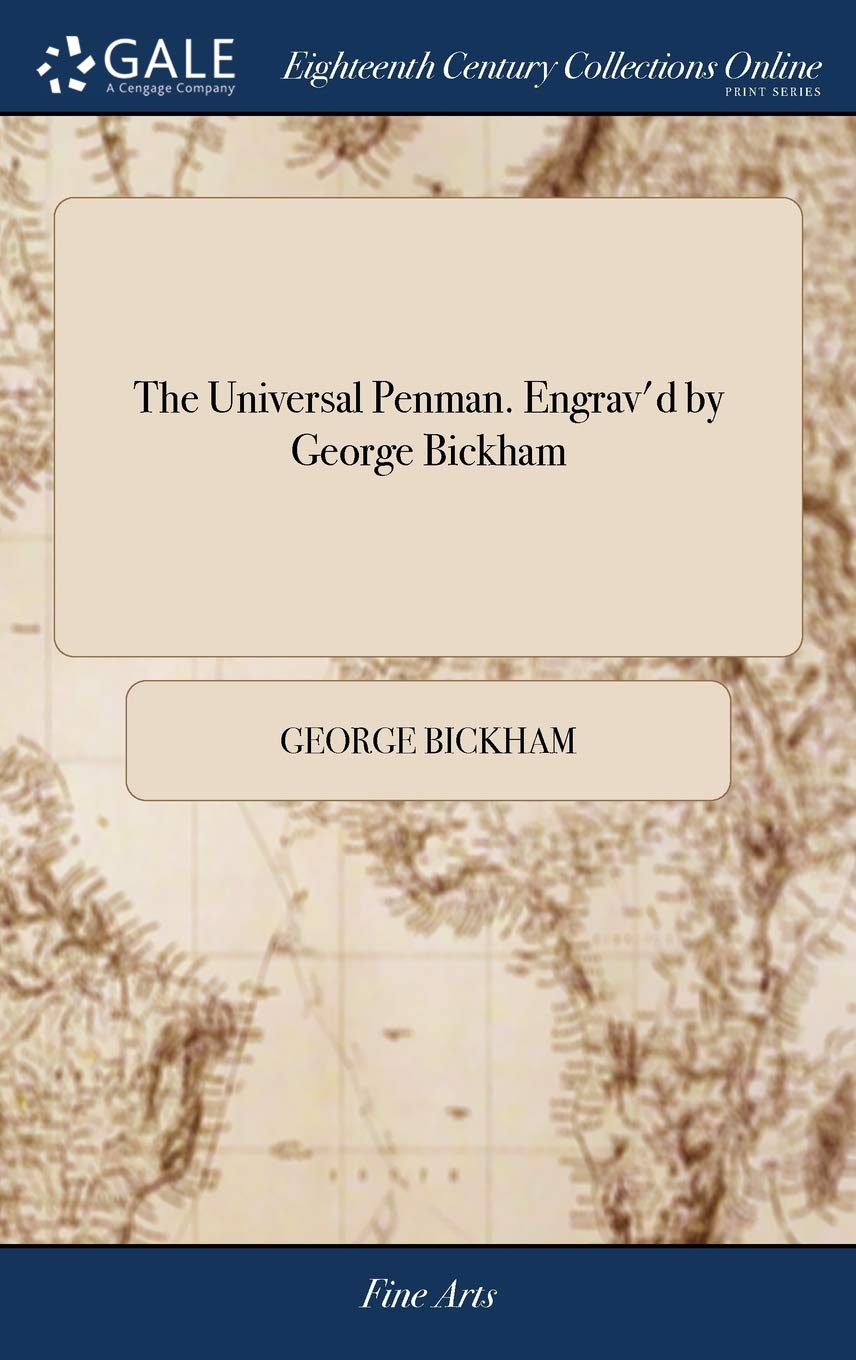
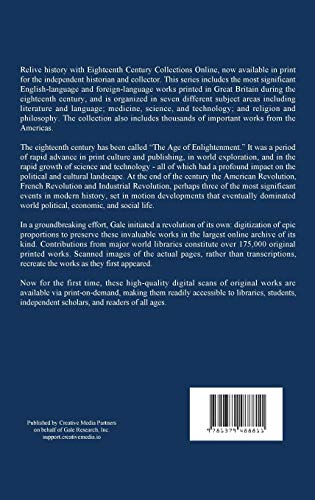
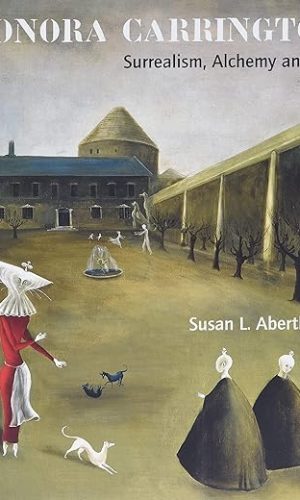
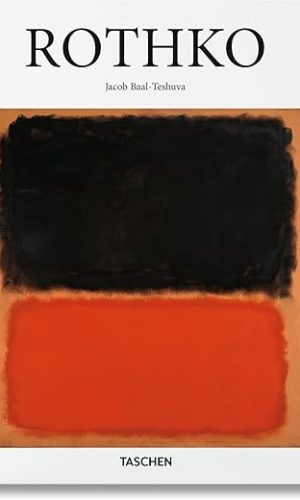


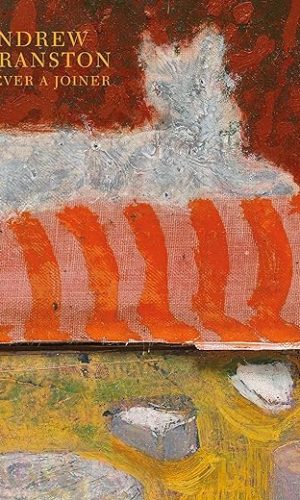
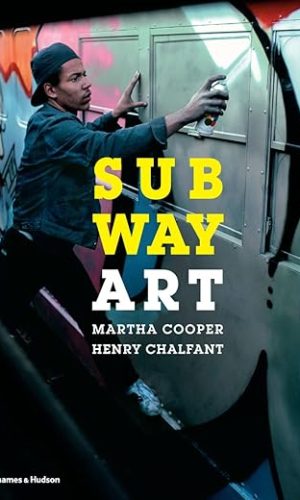


by F. B. Mills
Having seen many examples of Bickham’s plates over the years I was eager to view this book in its entirety and opted for the B&N hardback version to sate my curiosity. Yet, immediately upon arrival, was somewhat disappointed to see that the cover art had been sublimated into the cover’s boards, furthermore, upon a subject within which symmetry, proportion and balance are paramount, Bickham’s cover illustration is dealt another blow by the binders with the art bleeding over the cover’s edges. It’s also worth pointing out that in this reprint’s preface by Philip Hofer of the 1941 edition, a footnote indicates that the plates have been reduced in size, yet it’s unclear whether that’s for the ’41 ed’ or this 2012 ed’n or, for that matter, what the original sizes were. Nonetheless Bickham’s masterpiece is all there within and is a glory. Incidentally, the vanishingly tiny hairline strokes which in reality are the hallmark of the master penmen of ages past will have to be imagined for modern printing does not appear able to reproduce them for reasons which are unclear to me, though likely a combination of paper, ink and economy. Having never seen an original Bickham plate I am given to wonder whether he managed to capture also the magic of the sublime hairlines of those he masterfully copied.
by Ewa
Its universal classic 🙂
by Bill the Bus
This is a large selection of engraved pieces issued by George Bickman, a master engraver, in the late 1730’s. There are bills of lading, promisery notes etc but mostly edifying texts, written and engraved by the finest exponents of the age. It is not, as I hoped, much use in showing the format for correspondence in the C18th, as there are only a few samples of letters. However, it is an invaluable window on the mindset of the time. It is also useful for studying the handwriting styles that were common then.
by Patrick B.
Great pages, good information with each reproduction.
by Ada
The media could not be loaded.
The Universal Penman engraved by George Bickham is my wonderland. I often get so lost in the beauty of the flourished references this book contains! Amazing.
by Rubedo
Incredible amount of writing examples which can be copied. I found in this many ‘hands’ of copperplate and a good example as it showed me how my scribble can be as individual as anyone’s and still be decent enough. Every aspiring calligrapher or historian researcher of writing should consider this book. I found the old way of writing quite entertaining.
Im not disappointed with this book although its not an explanation of ‘how to’ but an example of what can be done with your own efforts to write better according to your own style. Calligraphy is not easy or we all could do it, this book showed me that you can be individual when attempting to improve on your own penmanship.
Worth while having.
by Caramba
The copy I received is published by Snowball publishing 2012, but it is actually one of the many Print-To-Order reprint books to be found on Amazon, with the barcode & “Printed by Amazon” inside the back cover. A largish soft paper-back (23cm High x 15 cm wide x 1.3cm thick).
Flicking through the book it’s very clear that the original edition was much larger! (more like the excellent Dover press reprint books – intact the cover with it’s grey background looks suspiciously like they are copying the look of the Dover books) As a result you will need your spec’s for a lot of the pages!
The content is essentially just lots of examples of daily standard script calligraphy interspersed with ornate headings, & the odd illustration. At the back there are 2 pages of alphabets (5 to a page, so again tiny), & some examples of non-english script (greek, hebrew, etc.).
There is no instruction on calligraphy, just examples of Bickham’s work, prefaced by a 2 1/2 page introduction by Philip Hofer dated 1941.
Like most script the body text tends to be a bit samey, so the most useful stuff here is probably the ornate twiddly calligraphy headers, but too much of the content is printed too small to be a particularly useful reference.
So if you see it cheap enough it might be worth picking up, but you’d be better with a larger format edition.
by Stompie
THe book is full of fantastic writing. A great load of examples that show just how excellent handwriting can be and although some are so fancy I can’t make out what is written it just shows how far we have gone away from good old craftmanship.
When I sit down to write I first page through the book to get inspiration!